
How to Use TTL TO 485: Examples, Pinouts, and Specs
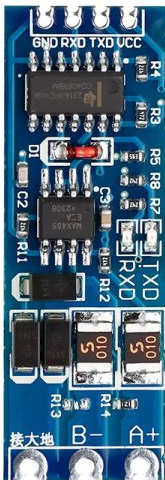
 Design with TTL TO 485 in Cirkit Designer
Design with TTL TO 485 in Cirkit DesignerIntroduction
The TTL to RS-485 converter is an electronic module designed to convert TTL-level signals (typically 0–5V or 0–3.3V) into RS-485 differential signals. RS-485 is a robust communication standard widely used for long-distance and noise-resistant data transmission in industrial and embedded systems. This module enables seamless communication between TTL-based devices, such as microcontrollers, and RS-485 networks.
Explore Projects Built with TTL TO 485
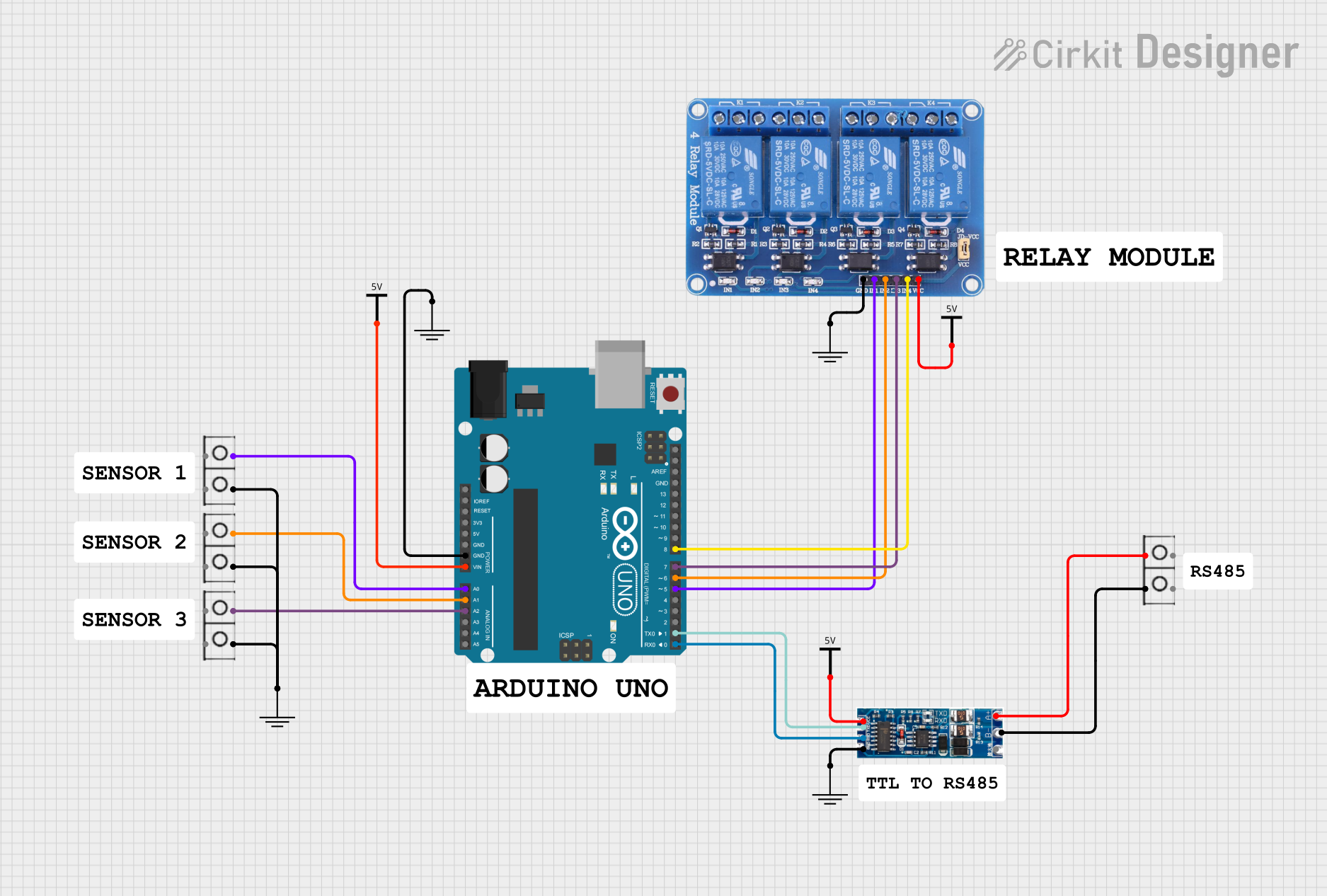
 Open Project in Cirkit Designer
Open Project in Cirkit Designer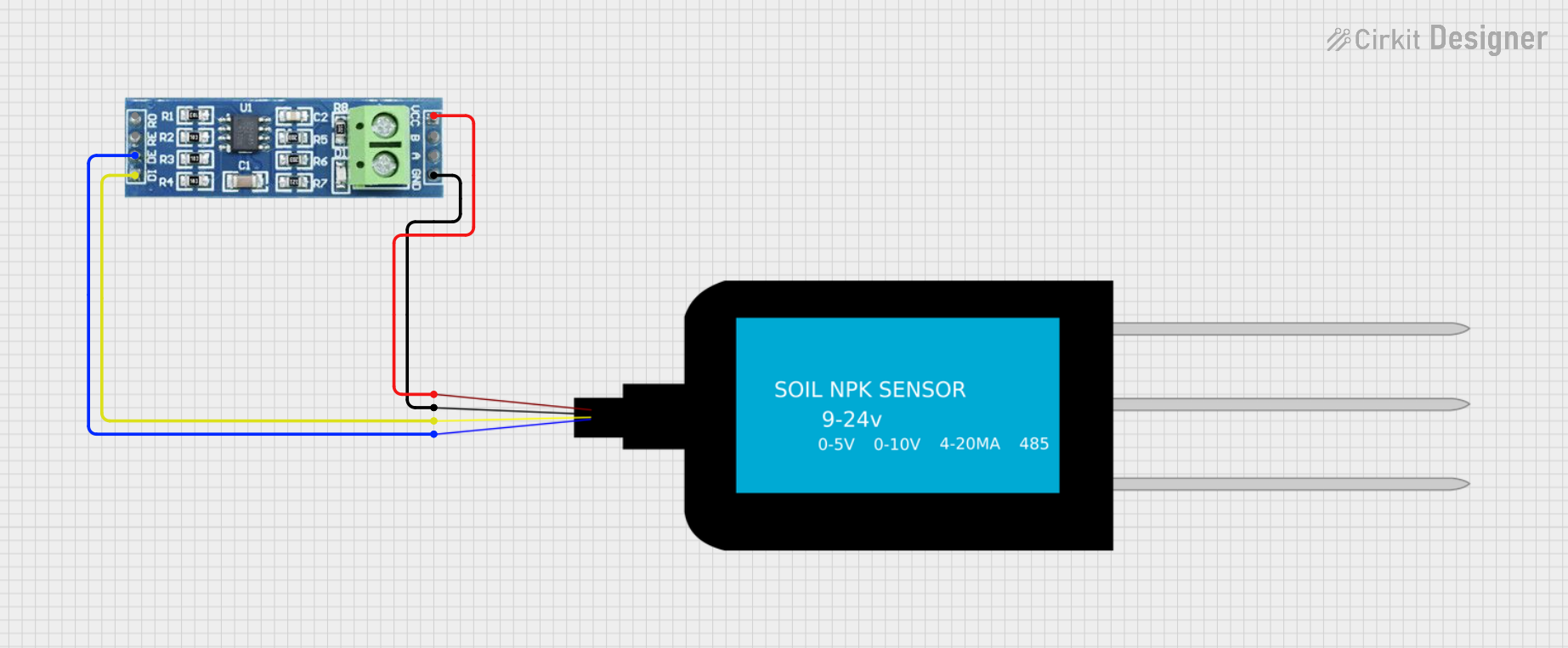
 Open Project in Cirkit Designer
Open Project in Cirkit Designer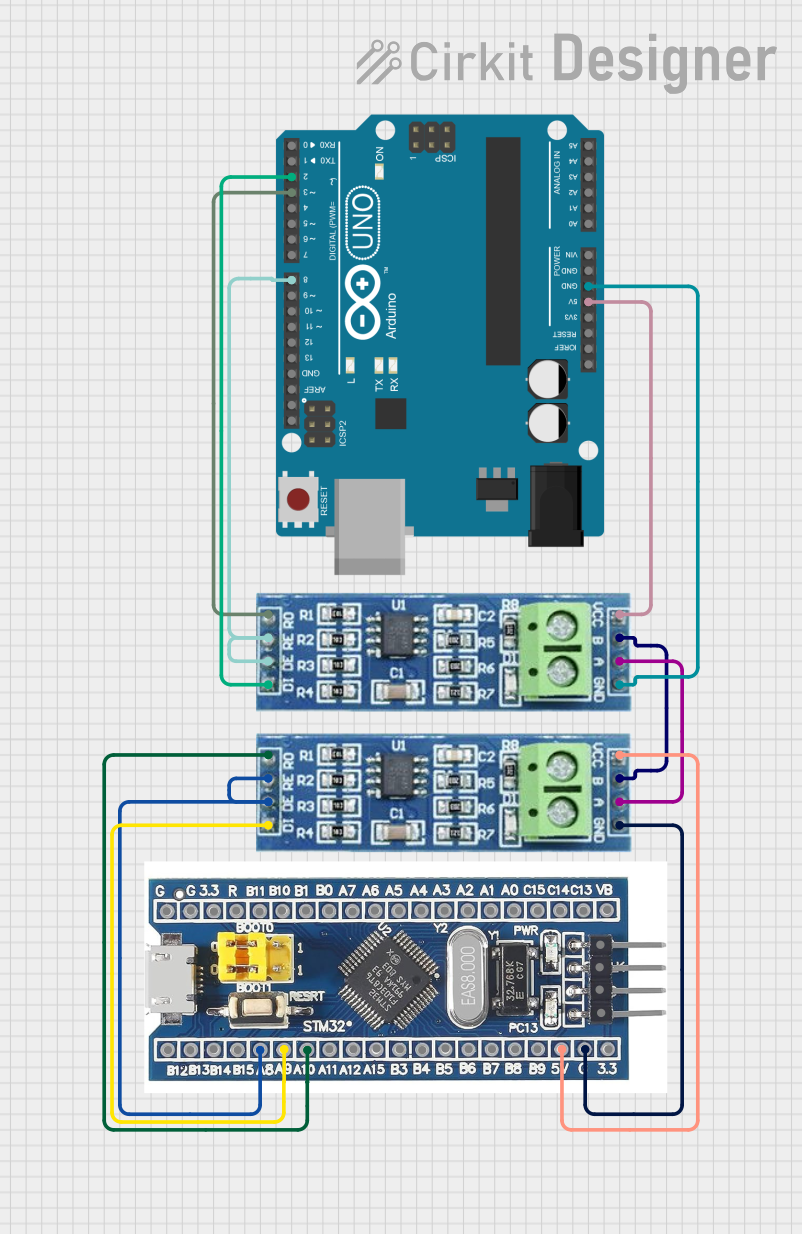
 Open Project in Cirkit Designer
Open Project in Cirkit Designer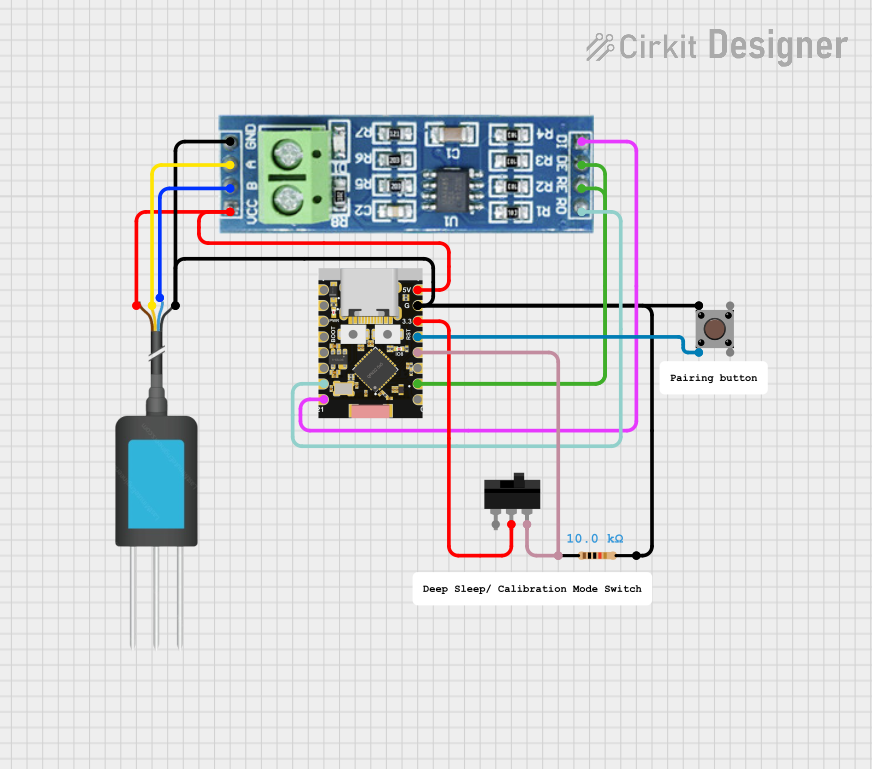
 Open Project in Cirkit Designer
Open Project in Cirkit DesignerExplore Projects Built with TTL TO 485

 Open Project in Cirkit Designer
Open Project in Cirkit Designer
 Open Project in Cirkit Designer
Open Project in Cirkit Designer
 Open Project in Cirkit Designer
Open Project in Cirkit Designer
 Open Project in Cirkit Designer
Open Project in Cirkit DesignerCommon Applications and Use Cases
- Industrial automation and control systems
- Long-distance communication between microcontrollers or sensors
- RS-485-based protocols like Modbus
- Home automation systems
- Data acquisition systems
Technical Specifications
Below are the key technical details of the TTL to RS-485 converter:
| Parameter | Value |
|---|---|
| Operating Voltage | 3.3V or 5V |
| Communication Standard | RS-485 |
| Baud Rate | Up to 115200 bps |
| Operating Temperature | -40°C to 85°C |
| Maximum Communication Distance | Up to 1200 meters (4000 feet) |
| Input Signal Level | TTL (0–5V or 0–3.3V) |
| Output Signal Level | RS-485 differential |
| Power Consumption | Low power consumption |
Pin Configuration and Descriptions
The TTL to RS-485 converter typically has the following pinout:
| Pin Name | Description |
|---|---|
| VCC | Power supply input (3.3V or 5V, depending on the module) |
| GND | Ground connection |
| TXD | TTL-level transmit data input (from microcontroller or TTL device) |
| RXD | TTL-level receive data output (to microcontroller or TTL device) |
| A (D+) | RS-485 differential signal positive terminal |
| B (D-) | RS-485 differential signal negative terminal |
| DE | Driver enable pin (active high, controls RS-485 driver mode) |
| RE | Receiver enable pin (active low, controls RS-485 receiver mode) |
Usage Instructions
How to Use the Component in a Circuit
- Power the Module: Connect the VCC pin to a 3.3V or 5V power source and the GND pin to the ground.
- Connect TTL Signals:
- Connect the TXD pin of the module to the TX pin of your microcontroller.
- Connect the RXD pin of the module to the RX pin of your microcontroller.
- Connect RS-485 Signals:
- Connect the A (D+) and B (D-) pins to the RS-485 bus.
- Ensure proper termination resistors (typically 120Ω) are used at both ends of the RS-485 bus for signal integrity.
- Control DE and RE Pins:
- Tie DE and RE together for automatic control or manage them separately using GPIO pins.
- Set DE high to enable transmission and RE low to enable reception.
Important Considerations and Best Practices
- Voltage Compatibility: Ensure the module's operating voltage matches your microcontroller's logic level (3.3V or 5V).
- Termination Resistors: Use 120Ω termination resistors at both ends of the RS-485 bus to prevent signal reflections.
- Biasing Resistors: Add pull-up and pull-down resistors on the A and B lines to maintain a known idle state.
- Grounding: Connect the GND of the module to the GND of the microcontroller and RS-485 network for proper signal reference.
- Cable Selection: Use twisted-pair cables for RS-485 communication to minimize noise and interference.
Example: Connecting to an Arduino UNO
Below is an example of how to use the TTL to RS-485 converter with an Arduino UNO for communication:
Circuit Diagram
- Connect the VCC and GND pins of the module to the 5V and GND pins of the Arduino.
- Connect the TXD pin of the module to the Arduino's TX (D1) pin.
- Connect the RXD pin of the module to the Arduino's RX (D0) pin.
- Connect the A and B pins to the RS-485 bus.
Arduino Code Example
// Example code for using TTL to RS-485 converter with Arduino UNO
// This code sends "Hello, RS-485!" over the RS-485 bus.
void setup() {
Serial.begin(9600); // Initialize serial communication at 9600 baud
delay(1000); // Wait for the module to initialize
}
void loop() {
Serial.println("Hello, RS-485!"); // Send data over RS-485
delay(1000); // Wait 1 second before sending again
}
Troubleshooting and FAQs
Common Issues and Solutions
No Communication on RS-485 Bus:
- Cause: Incorrect wiring or missing termination resistors.
- Solution: Double-check all connections and ensure 120Ω termination resistors are installed at both ends of the RS-485 bus.
Data Corruption or Noise:
- Cause: Long cables or improper grounding.
- Solution: Use twisted-pair cables, ensure proper grounding, and verify that the cable length is within the RS-485 standard limits.
Module Not Powering On:
- Cause: Incorrect power supply voltage.
- Solution: Verify that the VCC pin is connected to a 3.3V or 5V power source.
DE/RE Pins Not Configured Properly:
- Cause: DE and RE pins not controlled correctly.
- Solution: Tie DE high and RE low for transmission, or use GPIO pins to control them dynamically.
FAQs
Q1: Can I use this module with a 3.3V microcontroller?
A1: Yes, the module supports both 3.3V and 5V logic levels. Ensure the VCC pin is connected to the appropriate voltage.
Q2: What is the maximum baud rate supported?
A2: The module supports baud rates up to 115200 bps, but the actual performance may depend on cable length and environmental noise.
Q3: Do I need to use termination resistors?
A3: Yes, termination resistors (120Ω) are essential for maintaining signal integrity on the RS-485 bus.
Q4: Can I connect multiple devices to the RS-485 bus?
A4: Yes, RS-485 supports multi-drop communication with up to 32 devices on the same bus.
By following this documentation, you can effectively integrate the TTL to RS-485 converter into your projects for reliable long-distance communication.